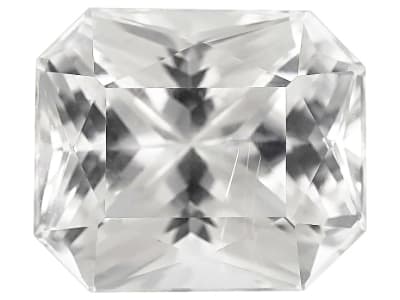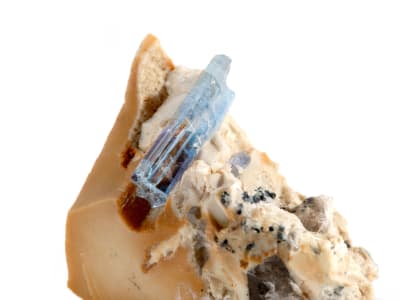Jeremejevite was named for a Russian mineralogist in 1883, but there are rarely any specimens found in Russia today. Recently Namibia has started to produce some mentionable crystals, but in such small amounts the stone is still very rare. Jeremejevite is typically found in pale blue-green, cornflower-blue to yellowish brown hues.
General Information
Common Name
Jeremejevite
Species
Jeremejevite
Transparency
Transparent
Dispersion
Strength: Moderate Fire
Refractive Index
1.637-1.653 Tolerance: (+0.002/-0.001)
Birefringence
0.009- 0.013
Optic Character
Uniaxial and Biaxial
Optic Sign
Negative
Polariscope Reaction
Doubly Refractive (DR)
Fluorescence
SWUV: Inert
LWUV: Inert
LWUV: Inert
Pleochroism
Dichroic, strong blue and near colorless
Hardness
6.5-7.5
Streak
White
Specific Gravity
3.270-3.310
Toughness
Poor
Inclusions
Jeremejevite often shows banding or growth related color zoning and occasionally step-like growth zoning that looks like lightning bolts. Stones can have natural inclusions, fingerprints and healing feathers.
Luster
Vitreous
Fracture
Conchoidal
Cleavage
None
Chemical Name
aluminum borate fluoride hydroxide
Chemical Formula
Al6B5O15(F,OH)3
Crystal System
Hexagonal
Chemistry Classification
Borate
Jeremejevite Colors
-
 Blue
Blue -
 Brown
Brown -
 Colorless
Colorless -
 Green
Green
Countries of Origin
Myanmar; Russian Federation; Unknown; Namibia; Madagascar; Germany; Tajikistan
Care
Normal care

